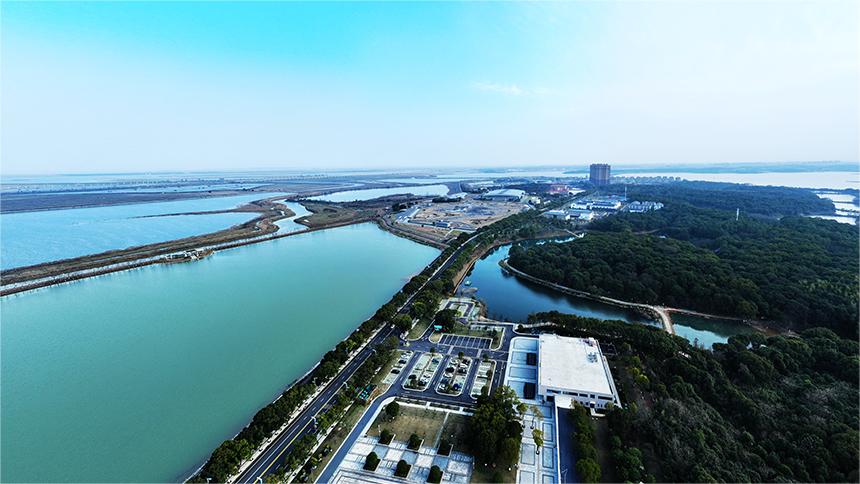New bright spots shine in pressured trade scene
As Chinese New Year dawned on Feb 10 sparking the Spring Festival celebrations, a freight train bound for Madrid, Spain, departed from Yiwu in East China's Zhejiang province, carrying not just valuable cargo, but also hopes for better transcontinental trade cooperation that could potentially transform the global economy.
As for its material contents, the train was loaded with 110 twenty-foot equivalent units containers of various goods, including industrial products, electronic devices and clothing. It was one among many such China-Europe freight trains on the Yiwu-Xinjiang-Europe route, known as Yixin'ou in Chinese. The route spans over 13,000 kilometers and saw its maiden trip back in 2014.
Official data showed as many as 68 Yixin'ou trips were made during the eight-day Spring Festival holiday.
"After years of development, the Yixin'ou freight trains are now running on over 20 routes reaching over 160 cities in more than 50 countries," said Chen Jinghua, general manager of Yiwu Land Railway Port Development.
Chen highlighted a notable shift in export products from traditional small commodities to high-tech products, saying the trains are supplying more high-value products like solar photovoltaic panels, spare parts for automobiles and electronic devices than others these days.
Official data reflect the marked shift in China's exports with the high-tech "new three" experiencing substantial growth. Exports of the "new three" — passenger EVs, lithium-ion batteries and solar cells — were worth 1.06 trillion yuan ($147.4 billion) in 2023, up nearly 30 percent year-on-year, according to the General Administration of Customs.
Citing the 2023 export data, Zou Yunhan, deputy director of the macroeconomic research office at the State Information Center's Department of Economic Forecasting, said: "Although foreign trade may continue to face pressure, there are still new bright spots worth noting.
"Foreign trade with countries involved in the Belt and Road Initiative is expanding from traditional export markets to broader regions. And exports of the high-tech 'new three' will continue to support stable growth in foreign trade."
Bai Ming, a researcher at the Beijing-based Chinese Academy of International Trade and Economic Cooperation, underscored the importance of the "new three" in driving high-quality development, contrasting them with the more traditional "old three" industries of furniture, clothing and home appliances.
Citing the case of Yiwu, home to the world's largest wholesale market for small manufactured goods, he said it needs to seek new growth opportunities and speed up the upgrade and transformation of manufacturing and foreign trade, offering more high-quality and high-value products for the target markets.
"Regardless of whether engaging in foreign trade or domestic sales, lacking a distinct brand makes survival in this fiercely competitive market a challenge. Branding is the way forward," said toys exporter Chen Meijun, who moved into Yiwu International Trade Market to start her business in 2002.
As of today, Chen said her team has forged partnerships with over 500 domestic manufacturers, supplying various types of toys across the globe, mainly to emerging markets such as the Middle East and South America.
"When I moved into the Yiwu market over 20 years ago, only 5 percent of the market's businesses engaged in foreign trade. After years of development, over 80 percent of the business operators here are doing foreign trade business," she said.
Bai from the CAITEC said it is advisable for exporters to embrace digital technologies to better tap into the target markets and then offer new quality products in demand.
"We need to build new advantages in foreign trade with more efforts to promote technologies, improve the product quality and services, and build our own brands," he said.
China has adopted policies and measures for improving the structure of foreign trade while keeping its scale stable. China's foreign trade reached a record high of 6.61 trillion yuan in the first two months of the year, up 8.7 percent year-on-year and signaling a strong start for 2024, according to the General Administration of Customs.
During the period, China's foreign trade continued the positive trend that began in the fourth quarter of last year, achieving year-on-year growth for five consecutive months. Exports of certain products like automobiles, home appliances and ships saw significant increases, said Lyu Daliang, director of the GAC's Department of Statistics and Analysis.
As for the composition of exports, GAC data showed that electromechanical products constituted nearly 60 percent during the January-February period, with automatic data processing equipment, integrated circuits and automobile exports recording substantial growth rates.
In addition to witnessing a growing trade volume with major trade partners like the Association of Southeast Asian Nations, the United States and South Korea in the first two months, China's foreign trade with other economies participating in the Belt and Road Initiative amounted to 3.13 trillion yuan, up 9 percent year-on-year, according to GAC data.
Experts said the better-than-expected results were driven by factors including the rapid growth in emerging markets and acceleration in the development of "new quality productive forces", which became key buzzwords during this year's two sessions.
According to the latest Government Work Report, the country will move faster to develop new quality productive forces.
The report noted that while facing new difficulties from a more complicated external environment, the country still enjoys favorable conditions and factors to stabilize foreign trade and investment, including its continued efforts to expand high-standard opening-up, its enormous market and complete industrial chains, and its bilateral and multilateral economic and trade cooperation with BRI countries.
Other factors include the acceleration in new forms of foreign trade such as cross-border e-commerce and stronger efforts made to attract and utilize foreign investment in key fields.
Despite facing pressures from deglobalization sentiment, China and the ASEAN "still have much room for further enhancement of trade and economic ties", said Ong Tee Keat, president of Belt and Road Initiative Caucus for Asia Pacific based in Malaysia.
While dismissing some pessimistic views on the Chinese economy propagated by some Western organizations, Mushahid Hussain Sayed, chairman of the Pakistan-China Institute, said, "China's growth has not been as fast as it was in the past 40 years, but it is still progressing very fast."
After years of development, China now boosts a huge market for foreign companies and has become a leader of innovation in high-tech development, especially in emerging fields like EVs, climate change, cyberspace and artificial intelligence, he said.
He further noted the marked shift in China's exports, saying the country is now exporting more high-tech products.
Referring to moves by some countries to seek "de-risking" or decoupling from China, Siyabonga Cyprian Cwele, South African ambassador to China, said: "No one can afford to ignore the growing importance of the Chinese economy, the world's second-largest economy.
"With a very open economy, China is fully embracing globalization. I don't think any smart economic agent or businessman will ever do that (decouple from China) … It is very unlikely that any country can successfully do that."
Looking ahead, he said he sees huge growth potential in economic and trade cooperation between South Africa and China, especially in the fields of e-commerce, scientific innovation and green development.
Photos
Related Stories
- China trade fair Indonesia kicks off in Jakarta
- Foreign trade growth on solid ground
- China's foreign trade up 8.7% in Jan-Feb period
- China's economic, social progress in 2023: Steady growth in foreign trade scale with quality improvement
- China's foreign trade expected to maintain momentum in 2024
- China's securities regulator pledges improved supervision standards, malpractice crackdown
Copyright © 2024 People's Daily Online. All Rights Reserved.









